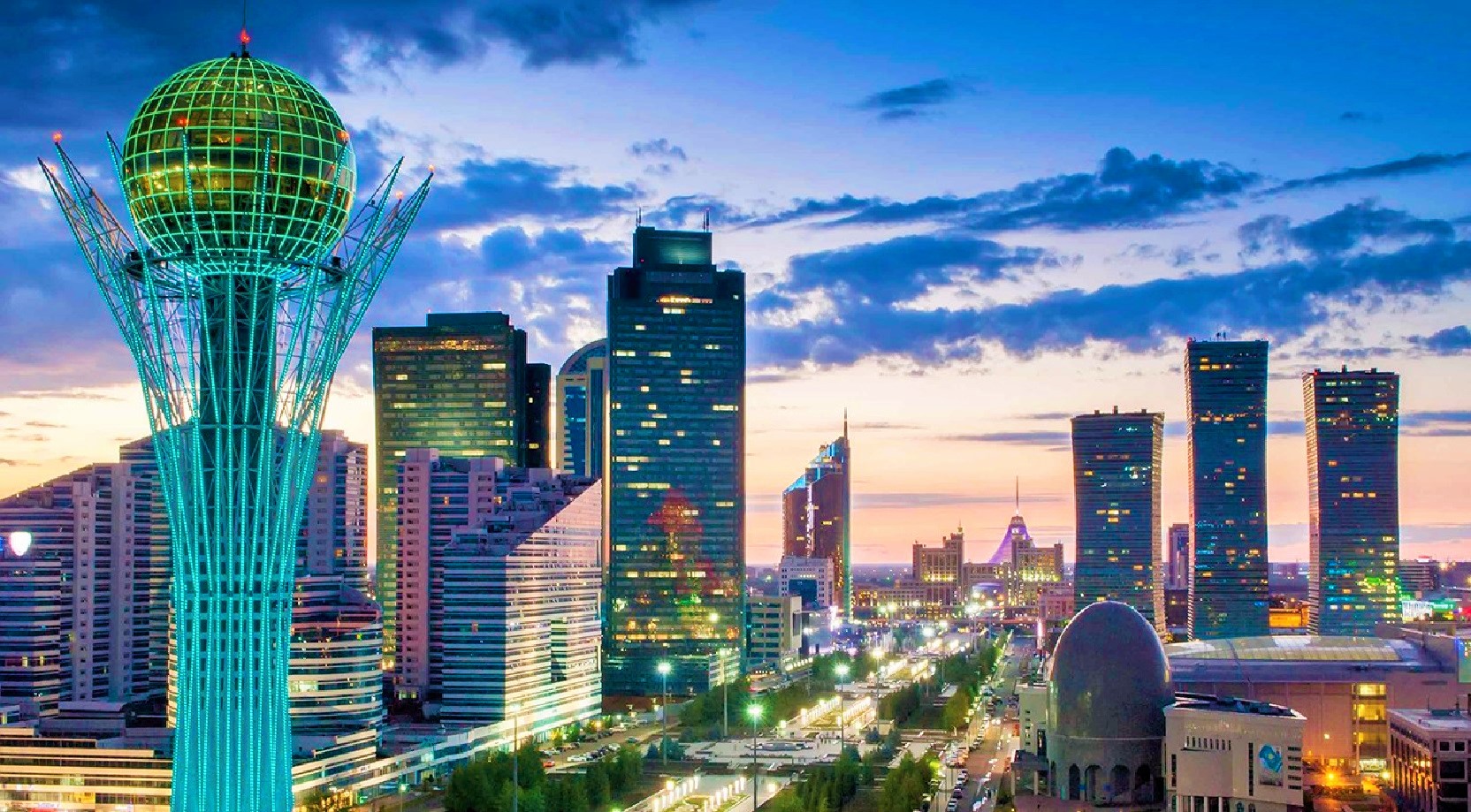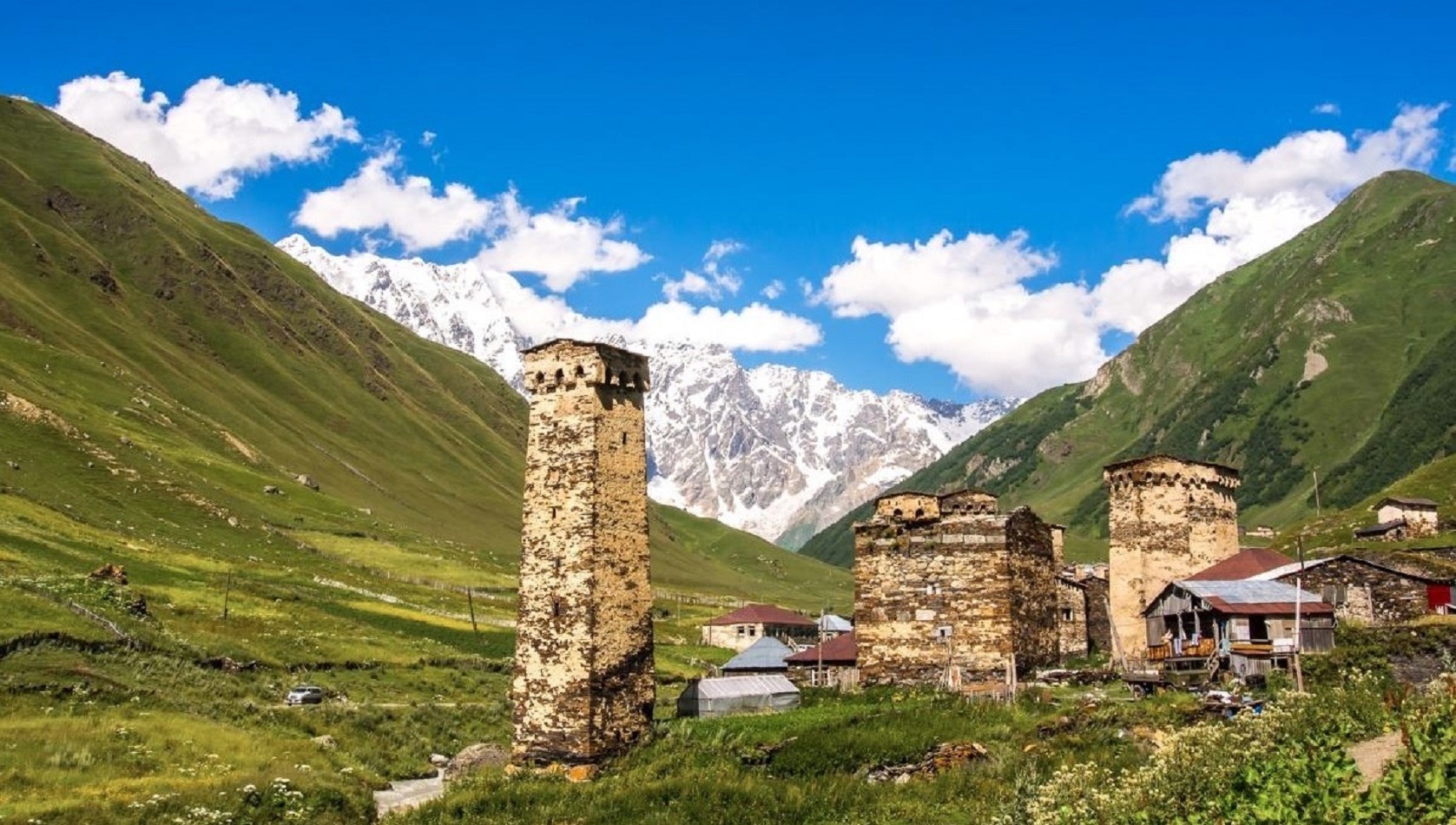The capital of Kazakhstan was known as Akmola, before being rechristened in 1998 as Astana, which means “the capital” in Kazakh. It formally took over from Almaty in 1997 as a capital. One of the main reasons behind shifting was Astana’s less earthquake-prone location which was considered more central for governance. Astana Kazakhstan is considered the glitziest capital in the world!
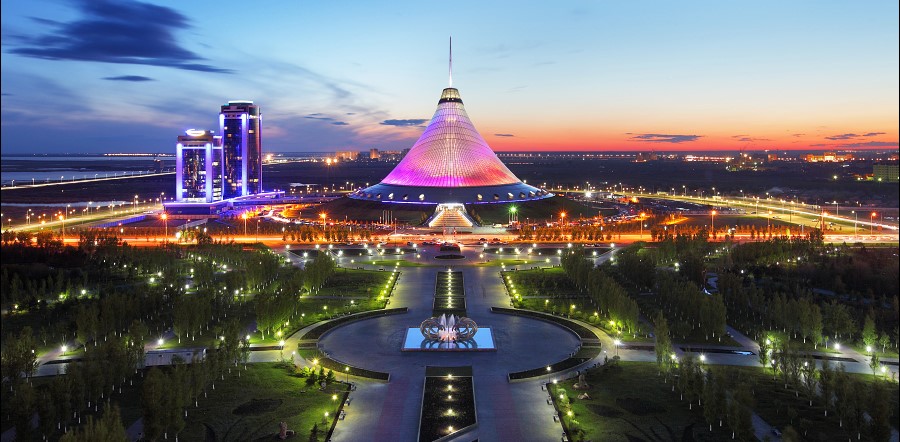
Astana Kazakhstan – The Glitzy Capital
Located in the middle of one of the largest flat, empty expanse of grasslands, Astana appears like an oasis, where miles of nothingness is interrupted by sudden appearance of futuristic buildings. Astana is an outcome of one man’s vision, the President Nazarbayev. With low population of only 16 million and billions of barrels of oil and gas tucked under its belly, Kazakhstan is a gold mine. The wealth generated from oil has been pumped into creating glistening new capital.
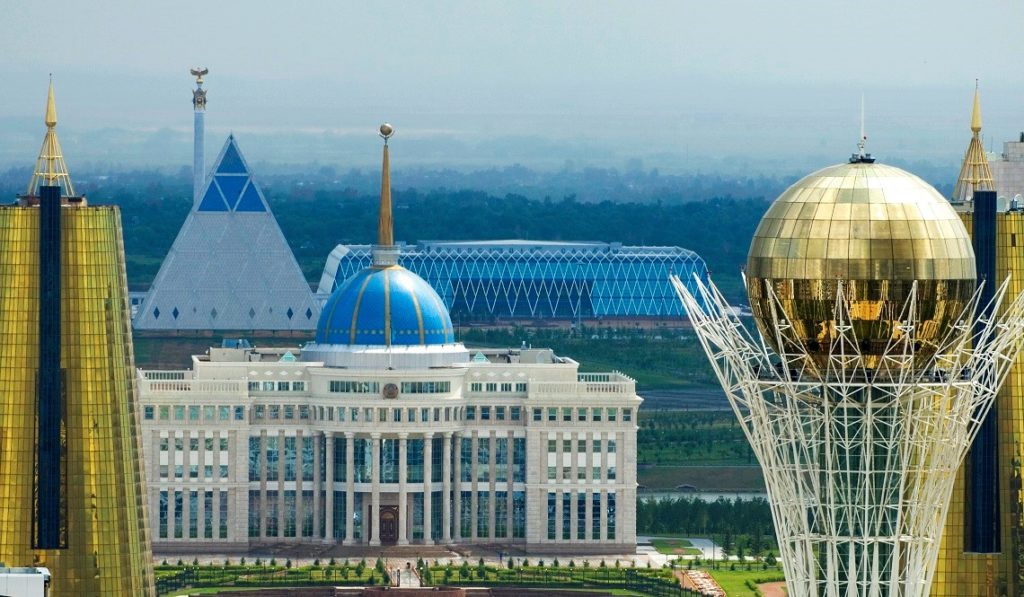
Just 16 years before Astana Kazakhstan did not exist, it was an empty patch of land by the Ishim river. The unrelenting development of the city at a breakneck speed has pushed it into the list of ‘must visit’ capital in the world. Variety of Asian, Western, Soviet and wacky conceptual buildings occupy the center which is being developed on both the sides of the river Ishim. While the right bank is occupied with commercial and service centres, the left bank houses fancy governmental and business buildings.
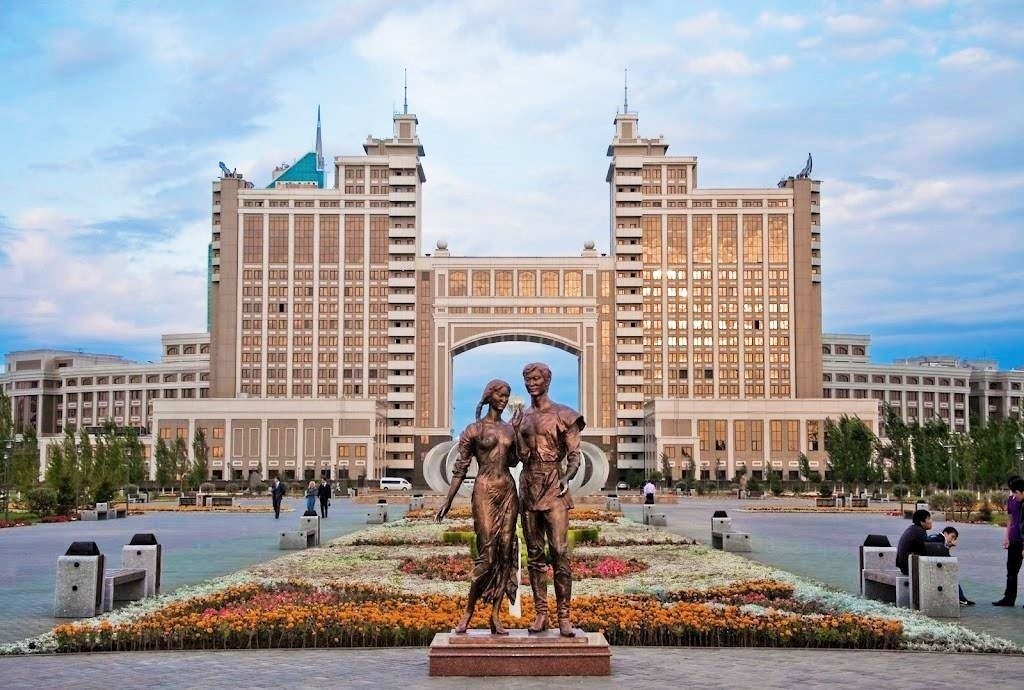
Known for icy cold winters, Astana Kazakhstan is the second coldest capital city in the world (after Ulan Bator in Mongolia) with temperature dropping to -40 degrees celsius during winter. The extreme weather condition has posed serious challenges in constructing large scale projects. Many international architects and design firms have been engaged to transform the president’s vision in creating a modern capital. New technological innovations have been devised to overcome these challenges which has enhanced the futuristic look of the city. Norman Foster, a British architectural firm is behind unique concepts which adorn expansive boulevards. The new capital is being dubbed as the ‘Dubai of Central Asia’.
Architectural masterpiece of The Khan Shatyr
The Khan Shatyr is a showpieces of Astana Kazakhstan. The large tent like structure is hard to miss on the road into town from the airport. It is an entertainment center which houses a shopping mall, a food court, a game arcade, a park, mini golf course and a beach. Yes, a beach! The Sky Beach Club on the top floor is a highlight of this magnificent complex. The palm trees and sandy beach filled with the sand imported from Maldives create a tropical paradise where one can enjoy sunshine in the harshest winter.
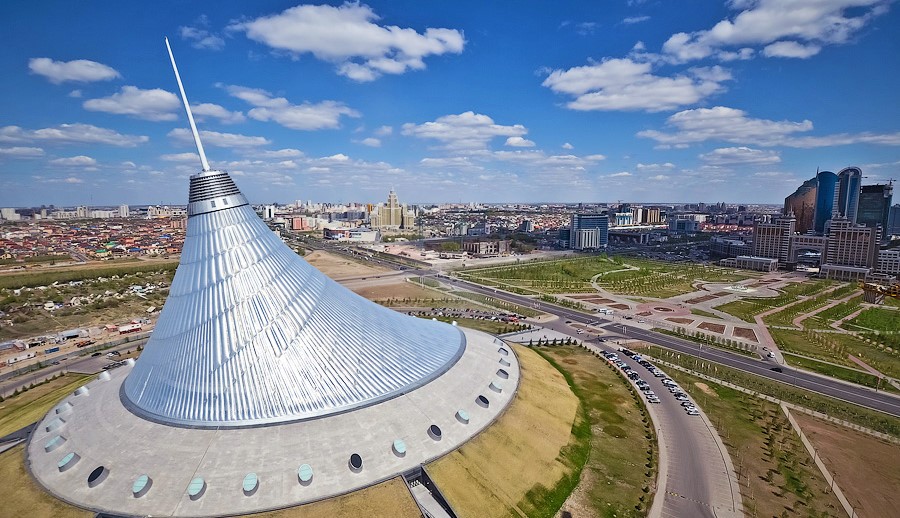
The 150 meters tall tilting tent made of special heat-absorbing material maintains summer like temperature inside the complex, creating microclimate of its own. With swimming pools, slides and fun rides, the Khan Shatyr is a wholesome recreational hub for a family throughout the year.
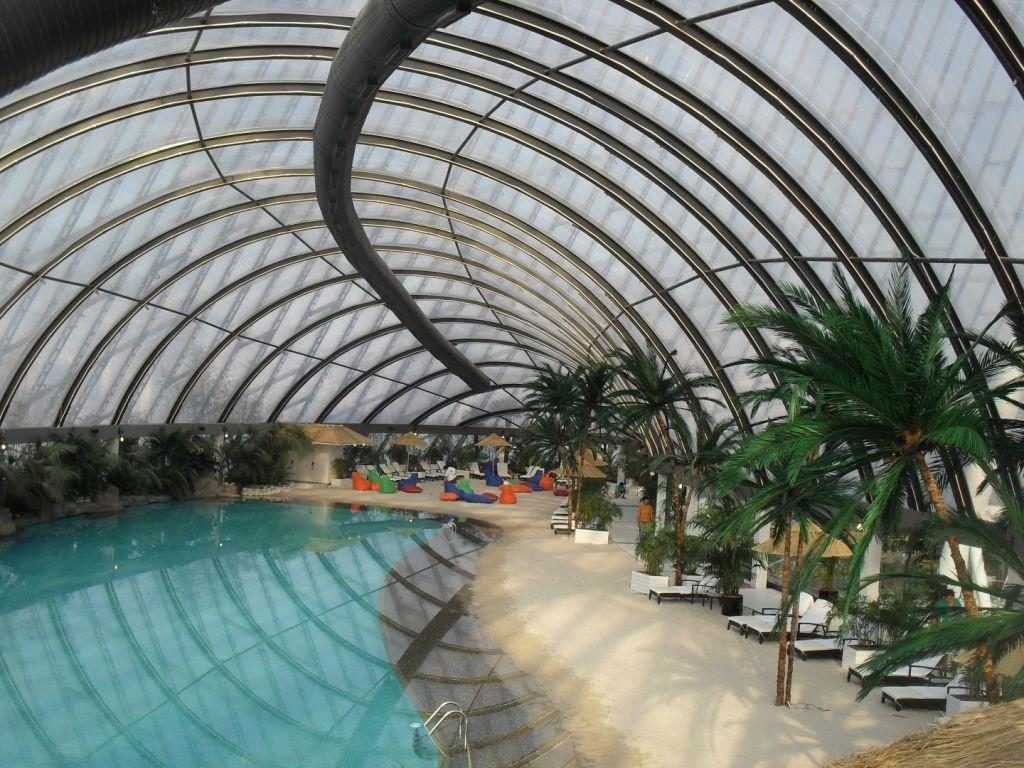
Legendary Bayterek Tower
Bayterek Tower is the most famous landmark in Astana Kazakhstan. The white latticed structure with a golden ball on top stands tall at 97 meters height. The design of the tower represents Kazakh legend where a mythical bird Samruk lays a golden egg on top of the poplar tree, beyond human reach. Also referred as a “Tree of Life”, locals fondly call it a giant lollipop! During season time, you can find a long queue lining up to touch the golden palm prints of President Nazarbayev’s palms placed inside the golden egg. The tall vase shaped tower contains an observatory on the top which can be accessed by uniquely designed lift which moves upwards as well as sideways. This is the best place to soak in stunning panorama of the capital.
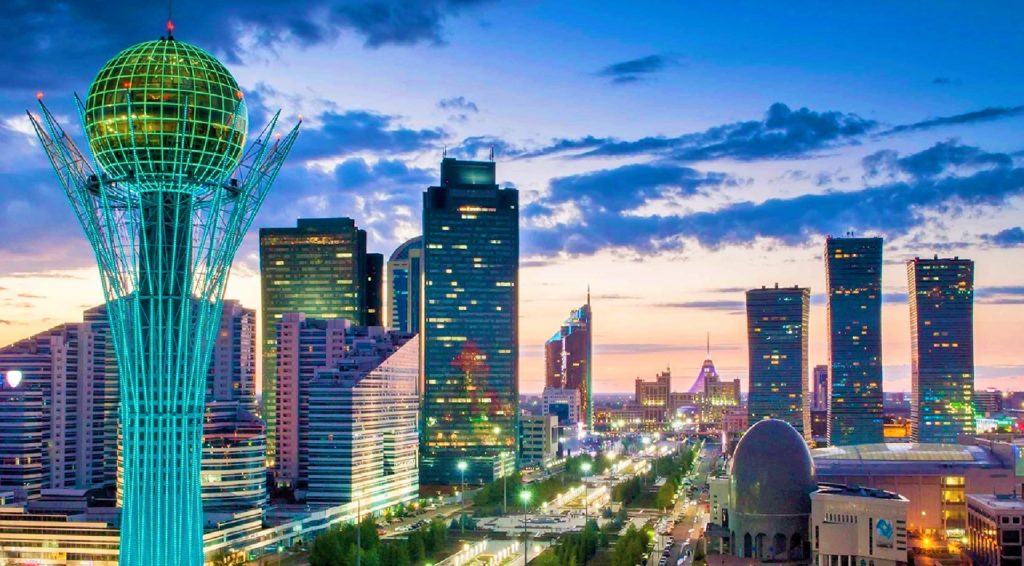
Astana Illuminati
The Pyramid shaped building of the Palace of Peace and Reconciliation was built in 2006 for the Congress of Leaders of World and Traditional Religions. The pyramid shape is symbolic of the humanity and religious equality. Representing each human’s path to illumination, the Astana Illuminati depicts the nation’s sentiments of promoting intra-ethnic and intra-religious harmony. The beautifully illuminated sparkling glass pyramid is a visual delight in the evening. Gaze into the distance, and the flashy cityscape of Astana Kazakhstan greets the eyes from the elevation of the pyramid.
The Seat of Power & Religion
Across the river shines the blue dome of White Presidential Palace which was designed to resemble the White House. It is the official workplace and residence of the president of Kazakhstan. And then there is Central Concert Hall which resembles traditional Kazakh instrument ‘dombra’. It is one of the largest concert halls in the world which can seat 3,500 guests. The dizzying development continues in the Kazakh capital. A visit to the Palace of Independence reveals a huge scale model of how Astana is planned to look in 2030!
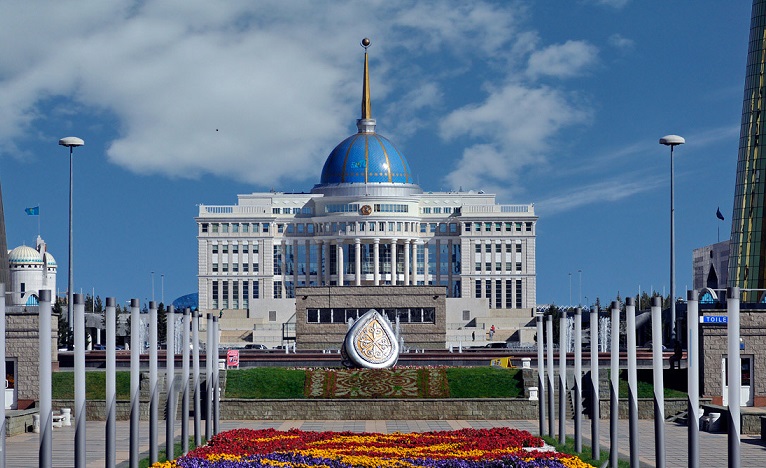
After gazing at all the metal and glass, the elegant facade of Hazrat Sultan Mosque brings relief to the squinting eyes. Built in classic Islamic style, away from the usual pomp and shine, the mosque lands serenity in the modern maze of Astana Kazakhstan. Hazrat Sultan Mosque is the largest mosque in Kazakhstan which is designed to accommodate 10,000 people during holy times. It is worth visiting the interiors where large halls are aesthetically designed using traditional Kazakh elements.
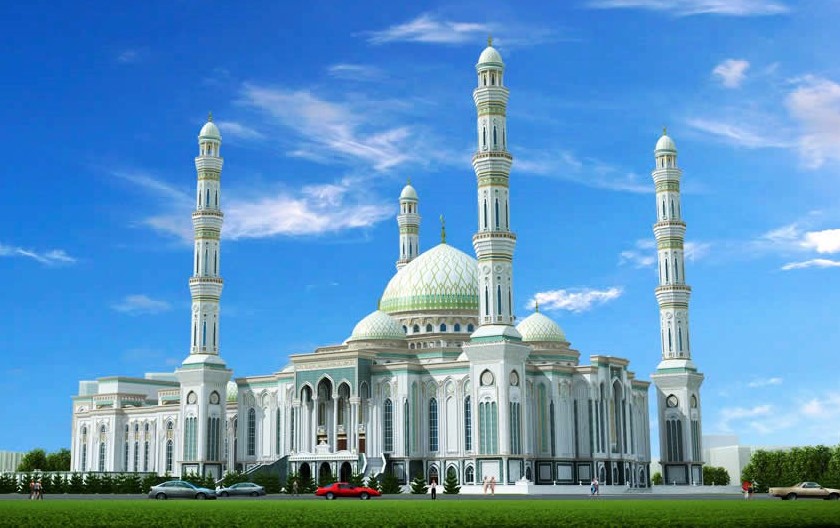
Astana Kazakhstan has become the land of striking architecture. It has earned international recognition through these wide scale innovative design projects. While during the day the glass and metal reflects clear blue summer sky, the evening illuminations brighten up the nightscape of the city. The glitzy skyline of Astana can easily put New York and Dubai to shame.
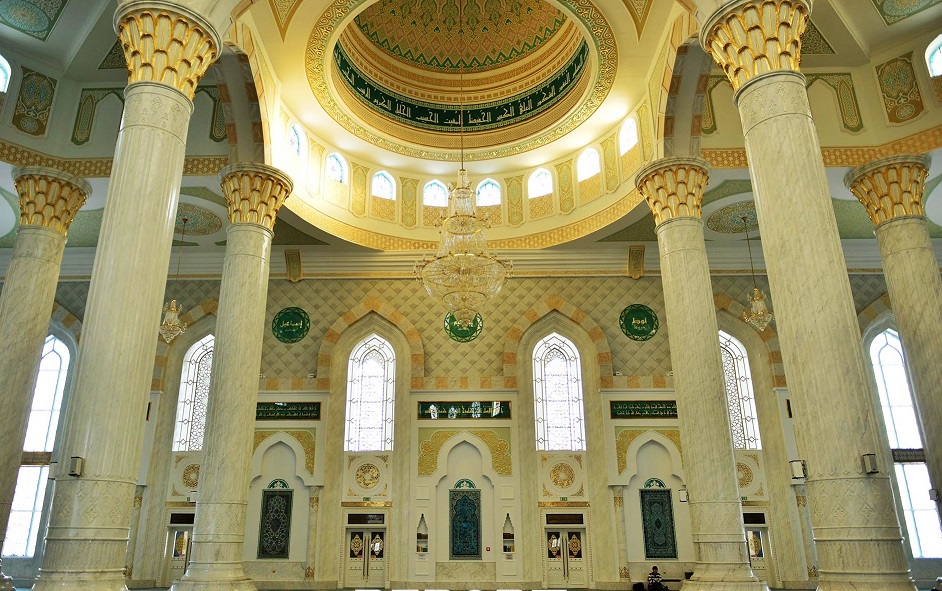
The Contrast: Nomadic Kazakhstan against Modern Astana
In a well planned city of Astana, everything is created with geometric precision, where each building boasts of stylized courtyards manicured to perfection. The meticulous detailing of every structure and its surroundings is awe inspiring. Excessively large buildings accommodating very little population provides an enormous spacious feel. Apparently the concept of space has been integrated across all the structures to nurture nomadic spirits of Kazakhstanis who for centuries are used to large open spaces.
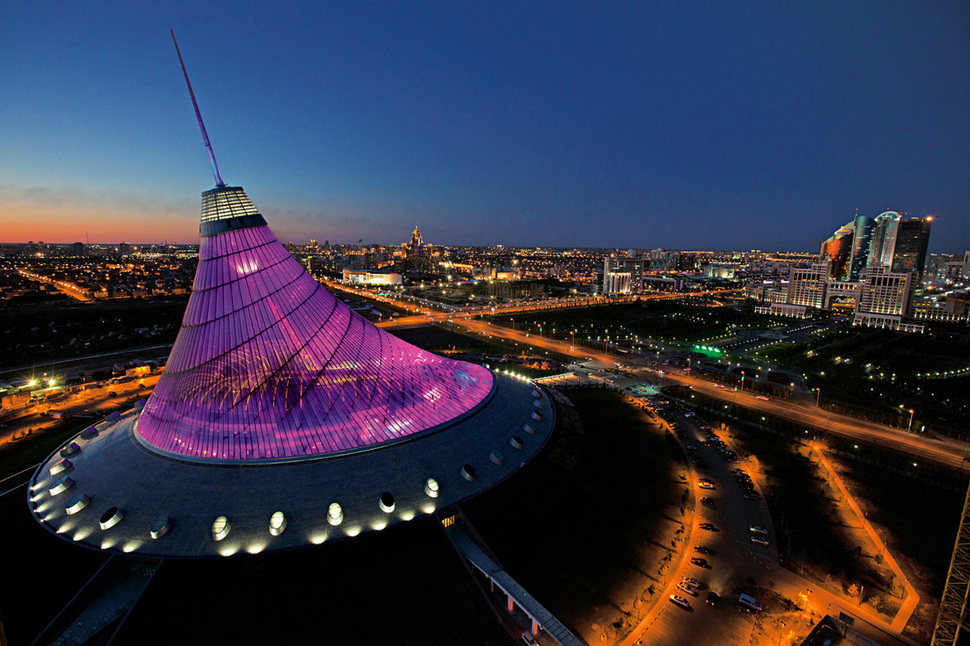
Astana in Kazakhstan is an answer to the endless emptiness in the North. It is also a showcase of Kazakhstan’s ambition and desire. Capital of Kazakhstan is a time machine which shows how 2050 would look like, right now!
Interesting facts about Astana Kazakhstan
- Astana experiences extreme weather with bitter cold winter at minus 40 degrees and summer at plus 35 degrees Celsius.
- Best time to visit Astana is during May and June or in August and September. July is warm but the chances of rainfall are high.
- Astana is a capital of Kazakhstan since 1997, before that the city did not really exist. All the development has been achieved in last 18 years.
- If the weather permits, Astana can be best explored by foot. But the massive size of everything is a deterrent to walking.
